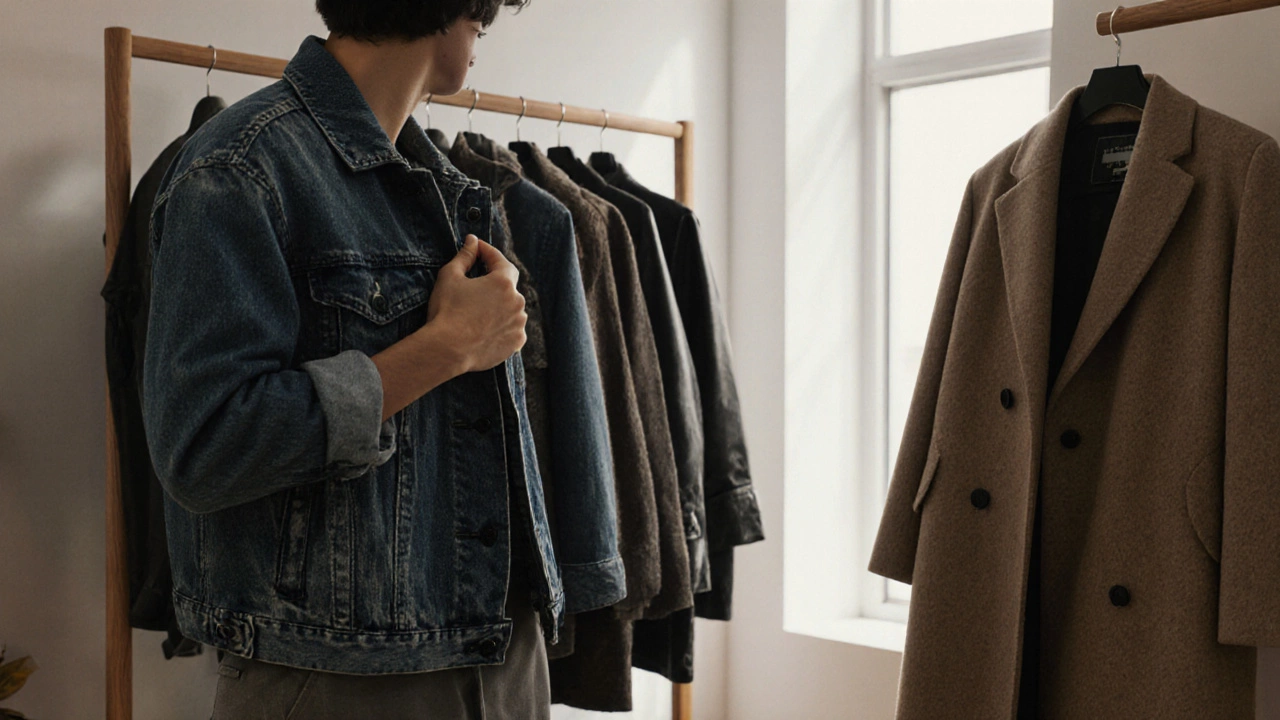Outerwear: Jackets, Coats & Seasonal Layers
When you think about outerwear, the garments you throw on over shirts or tees to stay warm, look sharp, or protect against the weather. Also known as layered apparel, it plays a key role in shaping a complete outfit. Outerwear encompasses several sub‑categories, each with its own vibe and function.
Key Pieces That Define Outerwear
A jacket, a lightweight or medium‑weight front‑opening layer, often featuring zippers or buttons is the most versatile, sliding from casual street style to business‑casual with ease. Moving up the warmth scale, a coat, a longer, heavier piece designed for colder months, typically crafted from wool, cashmere, or synthetic blends adds both insulation and a polished silhouette. For those who want a refined, structured look, a blazer, a fitted, often tailored jacket made of suiting fabrics, bridges the gap between formal and relaxed. Finally, the puffer jacket, a quilted, insulated outer piece filled with down or synthetic fibers, delivers maximum warmth without bulk. These four entities interact: jackets can be swapped for coats as temperatures drop, blazers can be layered under coats for a sleek office‑to‑outdoor transition, and puffer jackets fill the performance niche when extreme cold hits.
Choosing the right outerwear starts with understanding fabric attributes. Wool offers breathability and natural odor resistance, while synthetic blends excel in water repellency and easy care. Durability, weight, and stretch also matter—these attributes decide whether a piece will survive daily commutes or special events. Seasonal trends influence design details too; this year, sustainable bombers, oversized trench coats, and retro‑inspired leather jackets dominate runways. By aligning fabric choice with climate, activity, and style goals, you can build a capsule that works year‑round. Below you’ll find articles that unpack specific doubts—like how to spot cheap suits, which jacket styles are hot in 2025, and the health impact of footwear choices—so you can make confident purchases and keep your wardrobe fresh.
Jacket vs Coat: Key Differences Explained

Learn the key differences between jackets and coats, from length and insulation to style and care, so you can choose the right outerwear for any climate or occasion.
- Oct 9, 2025
- Violet Greenfield
- 0
- Permalink
- Tags:
- jacket
- coat
- outerwear
- fashion
- difference
Should I Wear a Jacket in 70 Degree Weather? Your Jacket Dilemma Solved

Not sure if you need a jacket when it's 70 degrees outside? This guide breaks down what 70 degrees really feels like, when a jacket makes sense, and how different factors (like wind or humidity) should impact your choice. From style tips to quick tricks for staying comfortable, you'll know exactly what to do the next time that 'in-between' weather hits. Discover real-life advice for men, women, and kids—because everybody's temperature comfort zone is a little different. Spare yourself the regret of shivering (or sweating buckets) with these smart tips.
- Jun 10, 2025
- Violet Greenfield
- 0
- Permalink
Jerkin Jacket: What It Is and Why It's Making a Comeback

Curious about the jerkin jacket? This article breaks down where this unique jacket comes from, how it looks, and why it's turning heads again today. Learn key historical facts, practical style advice, and real-life pointers on wearing a jerkin jacket. Get tips on finding one that fits your vibe, whether you're into period costumes or want to look cool and different. The jerkin might just surprise you.
- Jun 5, 2025
- Violet Greenfield
- 0
- Permalink
Coat vs. Puffer Jacket: Which is Your Best Bet?

Choosing between a coat and a puffer jacket can be tricky, especially with the weather's unpredictability. While both serve the primary purpose of keeping you warm, each has its quirks and perks. This article explores the practical essentials of both options, factoring in warmth, style, and suitability for different occasions. Ultimately, deciding which one suits you comes down to personal preference and lifestyle needs.
- Feb 5, 2025
- Violet Greenfield
- 0
- Permalink